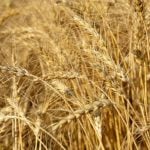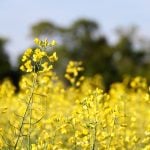An Alberta Agriculture beef specialist warns that hay needs to be completely cured before being baled. Recent high temperatures, resulting in quick drying conditions, have some producers heading out to bale within two to four days after cutting. If hay isn’t completely cured, there could be damage to the hay after being baled.
“Moisture probes measure the electrical conductivity or movement of electricity across the outside of the stems based on the amount of moisture there,” says Barry Yaremcio. “If the outside of the stem is dry, producers will get a very low reading and indications from the probe will be that the hay is ready to be baled."
Read Also

CBOT Weekly: Trade awaits USDA S/D report
Regardless of the United States government shutdown ending soon or not, the Department of Agriculture is set to issue its supply and demand report on Nov. 14. The USDA cancelled its October edition of World Agriculture Supply and Demand Estimates due to the shutdown and pushed back their November report a few days.
Yaremcio says the problem is that alfalfa and some of the grasses that have only been cut for a few days are not properly cured. There is more moisture on the inside of the stem that’s not being measured. A day or two later, that moisture will migrate to the outside of the stem, raise the moisture content in the bale and heating, mould formation and heat damage to the protein can occur.
"This will result in a substandard product, compared to the very high quality product that would have been baled if baling had been delayed by another two or three days.”
Instead of relying only on moisture probes to take a reading, Yaremcio recommends conducting a microwave test. This is done by taking a representative sample out of the bale, cutting it into small pieces and using the microwave test to double check moisture contents.
“If you have a bale probe that is used for core sampling bales, get a representative sample, weigh out 100 grams, look on Alberta Agriculture’s website for information about determining the moisture content in hay. Use the microwave and moisture probe test results to establish the difference between the probe reading and microwave results. If the probe is reading 14 per cent and the microwave is at 18 per cent, then you know how to interpret the probe information.
There are also the manual break tests to establish if the hay is cured. Take a handful of hay between your hands and try to break it in half or twist it in a circular motion; if the stems snap, that tells you that hay is cured.
“The main message here is that if the weather patterns look good, and producers aren’t quite sure of moisture content, err on the side of caution and give the hay another day or two to cure before baling.”














